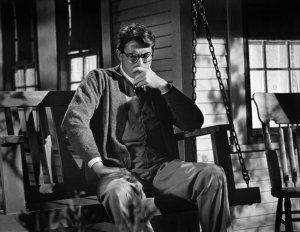I have a three-year-old at home, so it’s no great shock that I spent a large part of this past spring watching the movie Frozen. I never did see it in the theater, but after multiple viewings on Blu-Ray, I’ll admit that I see the appeal.
In case you’ve been living under a rock (like me)…
Frozen – a loose adaptation of “The Snow Queen” – is essentially a 21st-century addendum to the “Disney Renaissance” playbook. Like The Little Mermaid or Beauty and the Beast, it’s essentially a Broadway musical with legitimate Broadway talent cast in key roles. There are 24+ minutes of musical numbers in the film, all of which manage to be ear-worm infectious without being annoying. More important, each number helps to advance the story and develop the film’s characters. None of them are throw-aways that are only there to fill out the soundtrack album.
What separates Frozen from its Renaissance-era forebears, however, is its willingness to embrace modern thematic content and avoid pandering to children with fairy tale notions of love and marriage. The film benefits tremendously from a pair of intelligent, emotionally independent, and strong-willed heroines who ultimately find themselves in conflict with a fiendishly manipulative but non-transparent villain. Or, to put it more simply, at no point in the movie do you have to look at Elsa and Anna and think C’mon! Really!?!.
But, I’m not here today to write a review of a movie that came out eight months ago. I’m here to share some thoughts on one of the film’s musical numbers, the theme at it’s center, and the perspective it’s given me regarding character. Whether you’re a teacher, a writer, or just an avid reader and/or movie-goer, it might be worth taking a second look at your favorite characters through the lens presented below.
“Fixer Upper”
At this point in the film, lovable everyman Kristoff has brought a wounded Anna to his adopted family in hopes that they can help save the young princess’s life. Kristoff’s family, shocked to see him with a woman for what seems to be the first time, is intent on setting the pair up. What follows is a welcome moment of levity in a movie that delves into some dark subject matter (for a children’s story) and a song that has volumes to say about the human condition. For convenience, I’ve included the video below.
Oh…did I forget to mention that Kristoff’s family was a herd of trolls?
Sorry.
“Everyone’s a bit of a fixer-upper. That’s what it’s all about.”
Scott Adams wrote in Seven Years of Highly Defective People that he “only like[s] characters with huge, gaping character flaws”. I think if we stopped and really took stock, most of us would be hard-pressed to disagree with him. We are each of us fundamentally flawed as individuals, each carrying our own unique baggage through life. We turn to literature, film, and theater to witness the tribulations of others who share our same shortcomings and toil under our same baggage. Regardless of whether we’re searching for solace or schadenfreude, we seek out characters with whom we identify and insinuate ourselves onto their lives as a means of navigating our way through our own. Because of this need to relate, identify, and share, it’s rare that we meet a principal character in any medium who is perfect. When we do, we tend to find such characters unsettling and quickly grow suspicious of them for being “too perfect”. In other words, our first instinct is to regard perfection as a fundamental flaw.
So…perhaps the key to understanding any given character is simply understanding how he or she is, like each of us, a “fixer-upper”.
“We need each other to raise us up and round us out.”
At face value, “Fixer Upper” seems to make the cloying and quintessentially Disney-fied assertion that the only thing missing from our lives is to be swept away by the man or woman of our dreams. On closer examination, however, the song is a surprisingly honest examination of how messy a proposition true love really is. In the end, we love the people that we love because of their flaws rather than in spite of them. To paraphrase the lyrics, we can’t change the people we love and they can’t really change us, but we can bring out the best in each other.
“So he’s a bit of a fixer-upper, so he’s got a few flaws…”
In How to Read Novels Like a Professor, Thomas C. Foster wrote that the most important question you have to be able to answer about any character is what does he want more than anything else?.
Let’s assume that the answer across the board is simply this: To be fixed. In that case, consider the following questions:
1. In what way is the character a “fixer-upper”? In other words, What about that character needs fixing?
2. What’s it going to take to fix him?
3. Does the character actually get fixed?
and
4. How? Or, if not, Why not?
“The only fixer-upper fixer that can fix a fixer-upper…”
…is true love, according to the song. The trolls, of course, are singing about the potential for romance between Kristoff and Anna. That sentiment can be easily generalized to a wide variety of love stories and fairy tales. Take a moment to consider Ariel or Belle or The Beast and you’ll see what I mean. The mental math is relatively simple. It’s when we’re forced to venture into questions of why not? that the equation gets tricky.
In his book, Thomas C. Foster’s primary example is The Great Gatsby. Foster posits that the key to understanding its title character is simply understanding how desperately he desires to win back his lost love, Daisy Buchanan. James Gatz literally becomes a new man, a mysterious self-made millionaire named Jay Gatsby. And he does it solely to win the love of a woman he couldn’t have when he was just a working-class nobody.
Now, consider Gatsby as a fixer-upper.
The most glaring thing about Gatsby that needs fixing is the fact that he’s hopelessly hung up on the past. Gatsby believes – as would any first-time reader – that Daisy’s love would put his demons to rest. Unfortunately, even though Gatsby seems to win Daisy over, he still doesn’t win her love. Worse, he’s forced to face the fact that he likely never had it in the first place. Daisy is emotionally bankrupt, and Gatsby has to come to grips with the fact that the dream he’s been chasing for years is merely that: just a dream. Gatsby’s world falls apart, and the ensuing mayhem takes his life. What more did he have to live for anyway? He was a broken man with no hope of being fixed.
“He’s just a bit of a fixer-upper. He’s got a couple of bugs…”
Obviously, the equation isn’t perfect. Nothing so simple ever is. But it does hold up reasonably well, even when we have to bend the rules a little bit. Let’s look at two more examples.
Around the time Frozen hit theaters, I was busy reading Stephen King’s Doctor Sleep. The twenty-first century incarnation of Danny Torrance is a fixer-upper because he’s still haunted by the events that took place at the Overlook Hotel when he was a child, and he’s consequently fallen victim to alcoholism and drug abuse. What ultimately fixes Dan is the discovery that he has an illegitimate half-sister.
At its climax, Frozen asserts that the true love we need doesn’t have to be romantic. The love of family and friends is just as vital, magical, and powerful as that of a potential partner. Much the same can be said of Doctor Sleep. Together, Dan Torrance and his new family are able to face the demons that collectively haunt them. Acts of true love abound and are able to overcome even the ghosts of Jack Torrance and the Overlook itself.
“We’ve got a real, actual problem here.”
When I first had the idea for this post, I was busy teaching To Kill a Mockingbird to my freshmen. Using it as a test case in my first set of scribbled notes was almost enough to make me give up on the whole idea.
The hell with that.
Atticus Finch is about as close as I can come to thinking of a truly perfect character in literature. But I would still accuse him of having at least one major flaw: He is a hopeless idealist. Now, don’t get me wrong. Atticus Finch’s idealism and his moral resolve are two of his most endearing traits. We should all be so blessed. In the novel’s final chapters, however, Atticus’s unwavering compulsion to do the right thing almost costs him his son.
In the wake of Bob Ewell’s death, Atticus is so hell-bent on being an upstanding and law-abiding man that he’s willing to throw Jem at the mercy of the local court (a dicey proposition at best in Maycomb…especially if your name’s Finch). Worse, Atticus is blind to the fact that Jem is obviously innocent of Bob Ewell’s murder. The thing that saves Atticus Finch from himself? His daughter. Scout reminds Atticus of one of the most important lessons he’s ever taught her, one that is both infinitely relevant and immediately applicable to their situation. She listened. She learned. And now she’s the one teaching him, difficult as it might be. As the father of two young daughters, I can only pray that mine love me that much some day.
So…
Try it out for yourself. Pick a favorite book or movie, pick a character, and pick him or her apart. Answer the questions below and see what happens.
1. In what way is the character a “fixer-upper”?
2. What’s it going to take to fix him?
3. Does the character actually get fixed?
and
4. How? Or, if not, Why not?
Leave a comment with the results and your thoughts. I’m thinking about sharing this with my students next year, and the more feedback I get the better it will be.
As always, thanks for reading.
CVA


